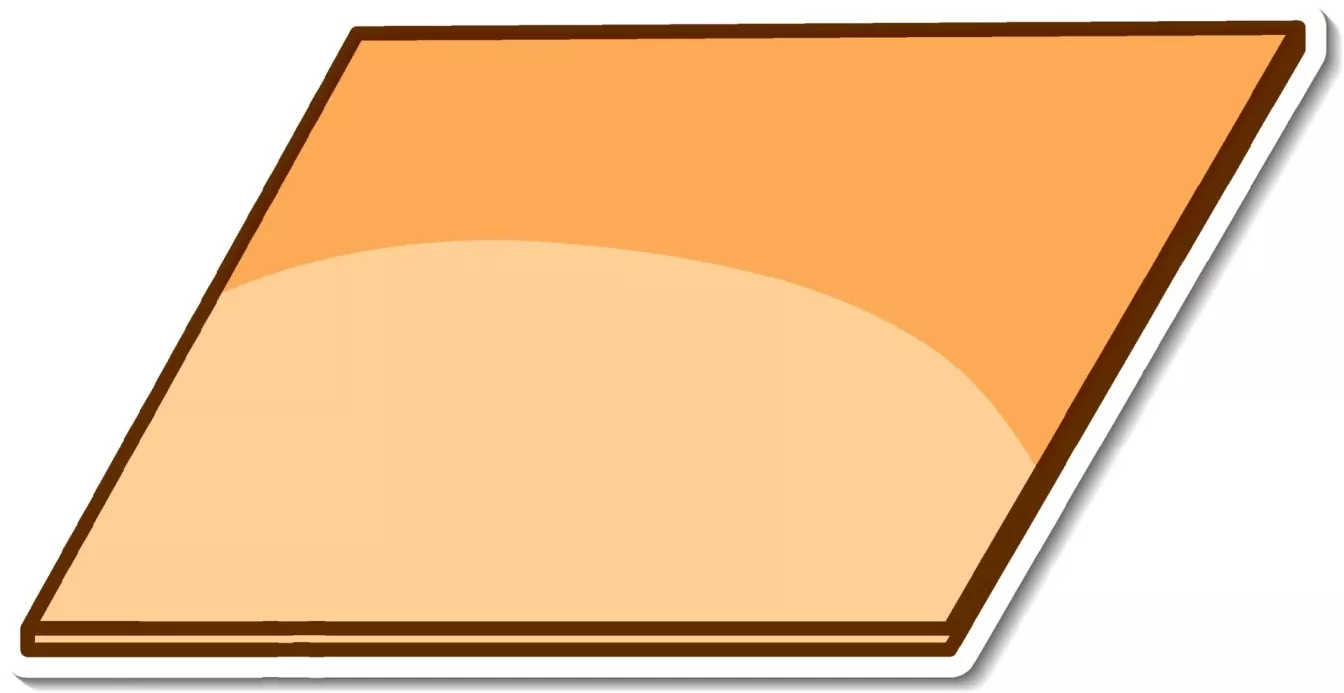Whole Numbers
In this article, we are learning about Whole Numbers as per the Primary \(5\) Maths level.
The learning objectives are:
- Reading and Writing Numbers
- Multiplying or Dividing by \(10, 100\) or \(1000\) and their multiples
1. Reading And Writing Numbers
Whole numbers include zero and counting numbers. They are without fractions.
In Primary \(5\), we will learn Numbers up to \(10\) million.
Let’s place the digits in \(675 \;840\) in their respective place values.


We read \(675 \;840\) as six hundred and seventy-five thousand, eight hundred and forty.
The place value of the digit \(6\) is hundred thousands. The value of the digit \(6\) is \(600 \;000\).
The place value of the digit \(7\) is ten thousands. The value of the digit \(7\) is \(70 \;000\).
The place value of the digit \(5\) is thousands. The value of the digit \(5\) is \(5000\).
The place value of the digit \(8\) is hundreds. The value of the digit \(8\) is \(800\).
The place value of the digit \(4\) is tens. The value of the digit \(4\) is \(40\).
Remember the ‘s’ for the place values!
Let us try placing the digits in \(9 \;675 \;840\) in their respective place values.


We read \(9 \;675 \;840\) as nine million, six hundred and seventy-five thousand, eight hundred and forty.
The place value of the digit \(9\) is \(\text{millions}\). The value of the digit \(9\) is \(9\;000\;000\).
It is a good habit to include spaces at the appropriate places when writing numbers in numerals.
Remember to include a comma and hyphen(s) at the appropriate places when writing numbers in words.
Question 1:
Write the following in numerals.

Solution:
Place the digits in a place value chart as shown below.

Three million, three hundred thousand, four hundred and thirty-five \(= 3 \;300\;435\)
Answer:
\(3\;300\;435\)
Question 2:
Write the following number in numerals.

Solution:
Place the digits in a place value chart as shown below.

Answer:
\(8\;450\;207\)
Question 3:
Write the following in numerals.

Solution:
Place the digits in a place value chart as shown below.

Answer:
\(4\;015\;068\)
Question 4:
Write the following in words.

Solution:
Place the digits in a place value chart as shown below.

\(3\;051\;043 =\) Three million, fifty-one thousand and forty-three
Answer:
Three million, fifty-one thousand and forty-three
Question 5:
Write in words the following number.

Solution:
Place the digits in a place value chart as shown below.

\(7\;250\;025 =\) Seven million, two hundred and fifty thousand and twenty-five
Answer:
Seven million, two hundred and fifty thousand and twenty-five
Question 6:
Write the following in words.

Solution:
Place the digits in a place value chart as shown below.

\(4\;325\;630 =\) Four million, three hundred and twenty-five thousand, six hundred and thirty
Answer:
Four million, three hundred and twenty-five thousand, six hundred and thirty
2. Multiplying or Dividing by 10, 100 or 1000 and their multiples
Multiplying by 10, 100 or 1000
When we multiply a whole number by \(10\), we add one ‘0’ after the number.
Example:
\(5 × \textbf{10} = 50\)
When we multiply a whole number by \(100\), we add two \('0'\)s after the number.
Example:
\(5 × \textbf{100} = 500\)
When we multiply a whole number by \(1000\), we add three \('0'\)s after the number.
Example:
\(5 × \textbf{1000} = 5000\)
Question 1:
Match.

Solution:

Multiplying by the multiples of 10, 100 or 1000
Now let’s multiply a number by the multiples of \(10, 100\) or \(1000\).
When we multiply a whole number by a multiple of \(10\), we express the multiple of \(10\) as a product of a number and \(10\).
Example:
\(\begin{align} 12 \times \textbf{50} &= 12 \times \textbf{5} \times \textbf{10}\\[2ex] &= 60 \times 10\\[2ex] &= 600 \end{align}\)
When we multiply a whole number by a multiple of \(100\), we express the multiple of \(100\) as a product of a number and \(100\).
Example:
\(\begin{align} 12 \times \textbf{500} &= 12 \times \textbf{5} \times \textbf{100}\\[2ex] &= 60 \times 100\\[2ex] &= 6000 \end{align}\)
When we multiply a whole number by a multiple of \(1000\), we express the multiple of \(1000\) as a product of a number and \(1000\).
Example:
\(\begin{align} 12 \times \textbf{5000} &= 12 \times \textbf{5} \times \textbf{1000}\\[2ex] &= 60 \times 1000\\[2ex] &= 60\,000 \end{align}\)
Question 1:
Do the following multiplication.
A. \(27 × 1000 =\) __________
B. \(27 × 5000 =\) __________
Solution:
A. \(27 × 1000 = 27\,000\)
B. \(\begin{align} 27 \times \textbf{5000} &= 27 \times \textbf{5} \times \textbf{1000}\\[2ex] &= 135 \times 1000\\[2ex] &= 135\,000 \end{align}\)
Answer:
A. \(27\;000\)
B. \(135\;000\)
Question 2:
Do the following multiplication.
\(319 × 6000 =\) _________
Solution:
\(\begin{align} 319 × 6000 &= 319 × 6 × 1000\\[2ex] &= 1\;914\;000 \end{align}\)
Answer:
\(1\;914\;000\)
Question 3:
Do the following multiplication.
\(700 × 9000 =\) _________
Solution:
\(\begin{align} 7 × 100 × 9 × 1000 &= 7 × 9 × 100 × 1000 \\[2ex] &= 6\;300\;000 \end{align}\)
Answer:
\(6 \,300 \,000\)
Question 4:
Fill in the blanks.
A. \(12 \;\times\) __________ \(= 12 \,000\)
B. \(12 \;\times\) __________ \(= 120 \,000\)
Solution:
A. \(\color{#F00}{12} \times \underline{\quad1000\quad} = \color{#F00}{12} \,000\)
B. \(\color{#F00}{12} \times \underline{\quad10\;000\quad} = \color{#F00}{12}0 \,000\)
Answer:
A. \(1000\)
B. \(10 \;000\)
Question 5:
Fill in the blanks
\(60\;\times\) __________ \(= 720\)
Solution:
\(6\color{#F00}{0} \;\times\) ________ \(= 72\color{#F00}{0}\)
\(6\color{#F00}{0} \times \underline{\quad12\quad} = 72\color{#F00}{0}\)
Answer:
\(12\)
Dividing by 10, 100 or 1000
When we divide a whole number by \(10\), we remove one \(''0’'\) after the number.
Example:
\(70 \;00\textbf{0 ÷ 10} = 7000\)
When we divide a whole number by \(100\), we remove two \(''0’'\)s after the number.
Example:
\(70 \;0\textbf{00 ÷ 100} = 700\)
When we divide a whole number by \(1000\), we remove three \(''0’'\)s after the number.
Example:
\(70 \textbf{ 000 ÷ 1000} = 70\)
Question 1:
Do the following division.
\(880 ÷ 10 =\) __________
Solution:
\(880 ÷ 10 = 88\)
Answer:
\(88\)
Question 2:
Do the following division.
\(293 \;000 ÷ 100 =\) __________
Solution:
\(293 \;000 ÷ 100 = 2930\)
Answer:
\(2930\)
Question 3:
Do the following division.
\(630 \;000 ÷ 1000 =\)__________
Solution:
\(630 \;000 ÷ 1000 = 630\)
Answer:
\(630\)
Dividing by the multiples of 10, 100 or 1000
Now let’s divide a number by the multiples of \(10\), \(100\) or \(1000\).
When we divide a whole number by a multiple of \(10\), we break the multiple of \(10\) into \(10\) and a number. We will divide by \(10\) first, followed by the number.
Example:
\(\begin{align} 30 \;000 \div \textbf{60} &= 30 000 ÷ \textbf{10 ÷ 6}\\[2ex] &= 3000 ÷ 6\\[2ex] &= 500 \end{align}\)
When we divide a whole number by a multiple of \(100\), we break the multiple of \(100\) into \(100\) and a number. We will divide by \(100\) first, followed by the number.
Example:
\(\begin{align} 30 \;000 \div \textbf{600} &= 30 \;000 ÷ \textbf{100 ÷ 6}\\[2ex] &= 300 ÷ 6\\[2ex] &= 50 \end{align}\)
When we divide a whole number by a multiple of \(1000\), we break the multiple of \(1000\) into \(1000\) and a number. We will divide by \(1000\) first, followed by the number.
Example:
\(\begin{align} 30 \;000 \div \textbf{6000} &= 30 000 ÷ \textbf{1000 ÷ 6}\\[2ex] &= 30 ÷ 6\\[2ex] &= 5 \end{align}\)
Question 1:
Do the following division.
\(36 600 ÷ 60 =\) __________
Solution:
\(\begin{align} 36 \;600 ÷ 60 &= 36 \;600 ÷ 10 ÷ 6\\[2ex] &= 3660 ÷ 6\\[2ex] &= 610 \end{align}\)
Answer:
\(610\)
Question 2:
Do the following division.
\(44 \;800 ÷ 800 =\) __________
Solution:
\(\begin{align} 44\;800 ÷ 800 &= 44 \;800 ÷ 100 ÷ 8\\[2ex] &= 448 ÷ 8\\[2ex] &= 56 \end{align}\)
Answer:
\(56\)
Question 3:
Do the following division.
\(630 \;000 ÷ 9000 =\) __________
Solution:
\(\begin{align} 630 \;000 ÷ 9000 &= 630 \;000 ÷ 1000 ÷ 9\\[2ex] &= 630 ÷ 9\\[2ex] &= 70 \end{align}\)
Answer:
\(70\)
Question 4:
Fill in the blanks with the correct answer.
\(8400 \;÷\;\) __________ \(= 70\)
Solution:
\(\begin{align} 8400 ÷ 70 &= 8400 ÷ 10 ÷ 7\\[2ex] &= 840 ÷ 7\\[2ex] &= 120 \end{align}\)
Answer:
\(120\)
Conclusion
In this article, we learnt about the Whole Numbers as per the Primary \(5\) Math level. We learnt the following subtopics in Whole Numbers:
- Reading and Writing Numbers up to \(10\) million
- Multiplication and Division by \(10\), \(100\), or \(1000\) and their multiples.


 SG
SG  VN
VN 
















